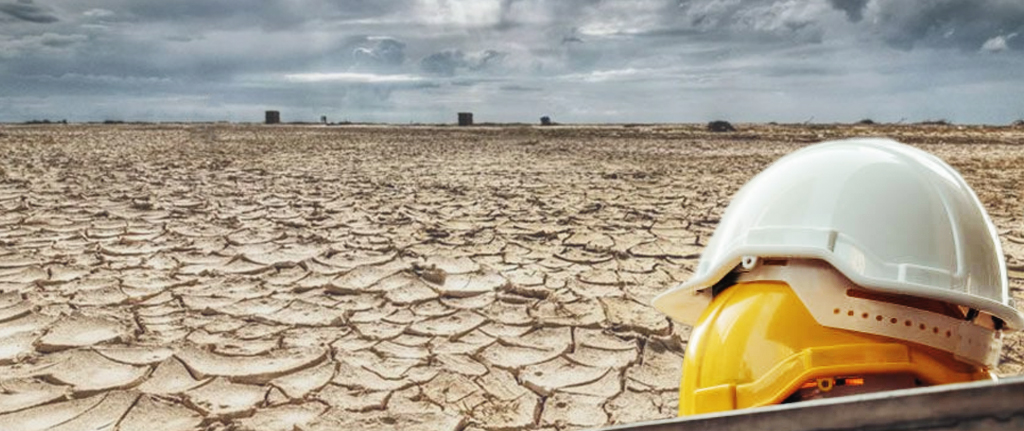Ensuring safety and health at work in a changing climate.

Climate change is already having serious impacts on the safety and health of workers in all regions of the world. Workers are among those most exposed to the risks of climate change, but often have no choice but to continue working, even under dangerous conditions.
Climate change is already having a serious impact on the safety and health of workers in all regions of the world. Workers are among those most exposed to the risks of climate change, but often have no choice but to continue working, even under dangerous conditions. Occupational safety and health (OSH) protection measures worldwide have struggled to keep up with evolving climate change risks, resulting in worker mortality and morbidity.
This report presents key data on the impacts of climate change on OSH, in order to draw attention to the global health threat currently faced by workers. The report addresses the following key issues:
- Excessive heat
- Ultraviolet (UV) radiation
- Extreme weather events
- Air pollution in the workplace
- Vector-borne diseases
- Agrochemical products
This summer, Germany, Belgium, the Netherlands and, more recently, Austria have been the four countries most affected by the heavy rains that have caused rivers to overflow their banks. The most worrying data is the thousands of people missing as a result of the floods, as well as the hundreds of deaths recorded.
In recent years, there has been an increase in extreme weather events, such as sudden changes in temperature or strong storms. However, these rains are added to the changes that we are already feeling in 2021. Last January, Filomena left us with a heavy snowfall that paralyzed the capital of Spain like never before. This June, North American countries have had to endure high temperatures and Russia, a Eurasian country that is also among the nations that record the lowest temperatures internationally, has suffered two heat waves in just three weeks, recording this June as one of the hottest in more than a hundred years.
The impacts of climate change are more than perceptible and we are feeling them in our society and they will only get worse, according to studies carried out by scientists and experts. We must be aware that these changes will undoubtedly not only aggravate existing occupational risks, but new risks will also emerge. In 2035 we will reach a point of no return if political and economic changes are not adopted to stop climate change. The data we are given is that by the end of the century the earth's temperature is expected to increase by 2ºC and if we are already having consequences with 1ºC, can we imagine what our planet would be like?
Climate change, the source of more and more serious occupational risks
Climate forecasts point to an increase in the frequency and intensity of extreme weather events, and one of the consequences of this trend is the loss of jobs and productivity. Rising global temperatures caused by climate change will make “heat stress” a common occurrence. Excessive heat at work creates occupational health risks; it restricts workers’ physical functions and capabilities, as well as their work capacity and productivity.
The International Labour Organisation (ILO) has already warned us that climate change will increase heat stress, that is, the heat load that is received and accumulated in the human body as a result of environmental conditions. And the increase in heat stress will have adverse repercussions on productivity and will cause economic and employment losses. It projects a global total of 70 million jobs lost by 2030 due to the decline in productivity caused by heat stress.
According to the ILO, agricultural and construction workers will account for 601 TP3T and 191 TP3T respectively of the total hours lost due to stress caused by high temperatures by 2030. If temperatures continue to rise, some agricultural areas will cease to be productive and many workers will be displaced to other sectors.
Today, we find many workers, prevention technicians and companies that still consider exposure to environmental heat to be a “natural hazard” outside of occupational risk prevention. We see that heat peaks tend to be seen as anecdotal events, to which individuals must “adapt”. This is an erroneous approach that gives rise to an attitudinal barrier that is now deeply rooted. Evidence, on the contrary, shows that due to climate change, episodes of high temperatures are very predictable events, which are repeated every year and affect working conditions.
Environmental conditions are mandatory in prevention plans
Companies where external environmental conditions may affect the well-being, health and/or safety of their workers must consider this risk in the risk assessment and develop a procedure to be activated if necessary, as well as safety and prevention guidelines. The measures developed to protect workers must be included in the company's occupational risk prevention management.
For all these reasons, identifying and addressing these risks in relation to climate change is one of the current challenges for prevention technicians, since these aspects can significantly affect workers, especially those who carry out all or part of their tasks outdoors, such as those in the logistics, transport, construction, agriculture, tourism and leisure sectors, etc. But we cannot forget that those who work inside factories and workshops are also at risk if temperature levels are not properly regulated.
Companies must have contingency plans, not only to ensure that workers can work, but also to protect their facilities. All of this not only affects the health of workers, but also their ability to work.
An action plan that can be activated during heat episodes, we have to anticipate, prevent, that is, prevent this risk with technical, organizational and training measures, for managers and workers, on the measures adopted in the company and the activation of first aid and health care, aspects that are often essential to save lives.
Governments, companies and workers are the main drivers of change in adaptation to rising temperatures. We have already approved the first Law on climate change and energy transition in Spain, perhaps late, but which involves objectives for 2030 on greenhouse gas emissions, and this July, the Government has presented the first plan of the Labour Inspection to combat the risks of heat stroke and process the corresponding fines for those who do not comply.
Only a positive and open approach can provide effective responses to the problem of global warming. The collaboration of all parties, administration, companies, social organizations and citizens is essential for everyone to win and to make progress in the search for solutions both from the point of view of mitigation and from the area of adaptation to the causes and effects of climate change.
Source: https://www.ilo.org/en/publications/ensuring-safety-and-health-at-work-in-a-changing-climate
https://www.aedipecatalunya.com/es/efectes-del-canvi-climatic-en-la-seguretat-laboral/


